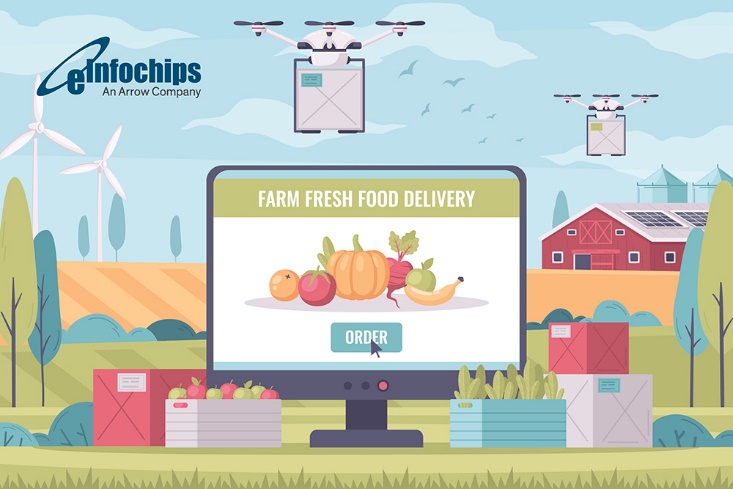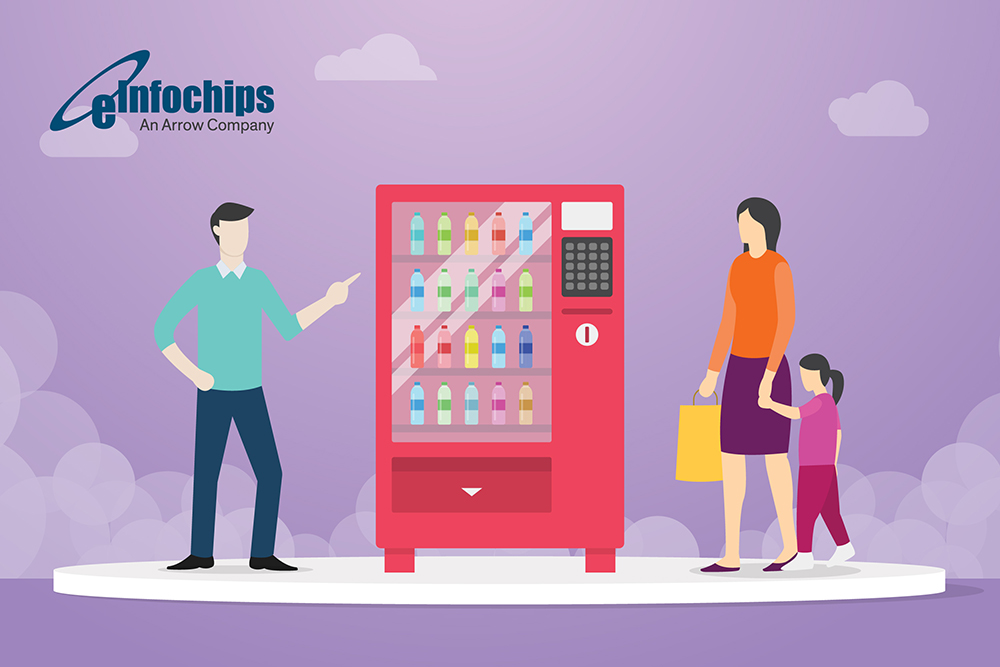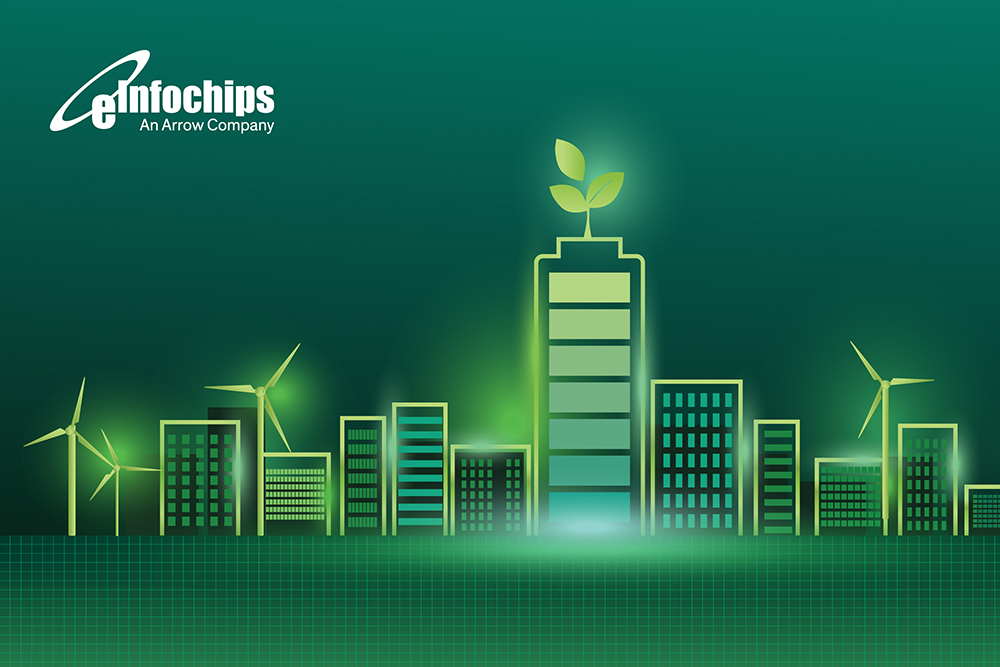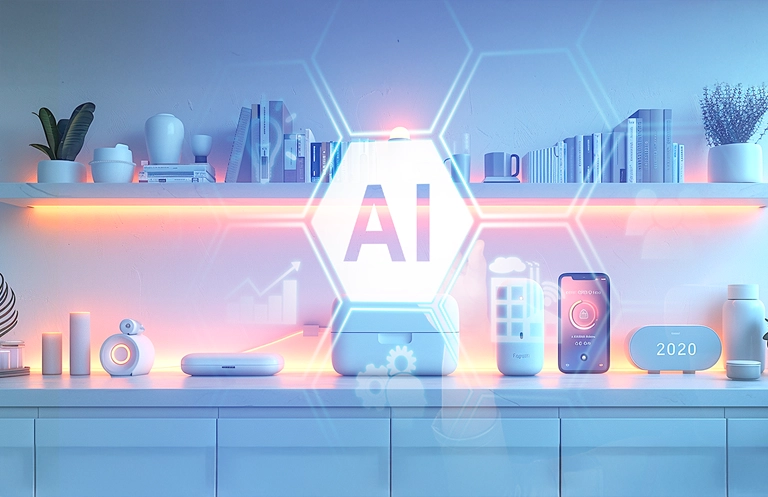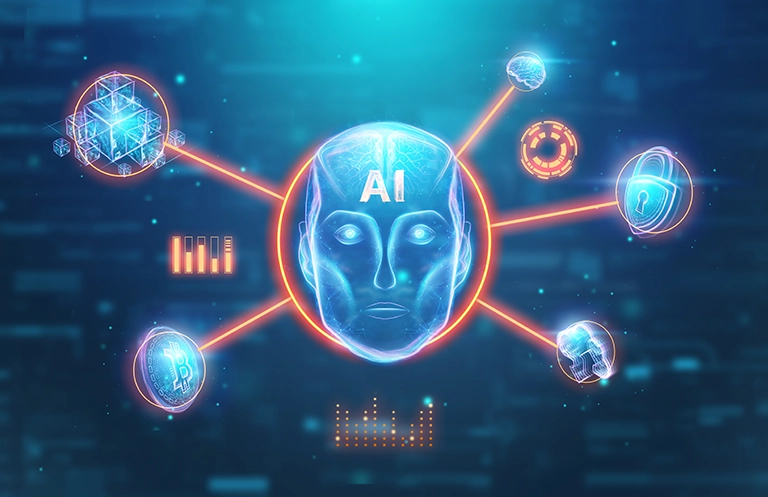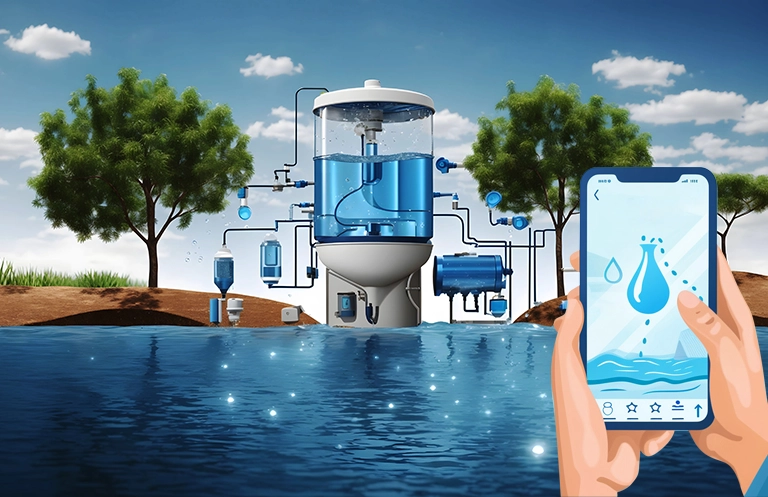The food service industry is highly dynamic and evolving industry, where the Internet of Things can create real value for businesses that distribute, deliver, and sell food and beverage products.
According to a report by ReportLinker, “The Internet of Things (IoT) and traceability for food and beverage (F&B) manufacturing market was valued at $4.08 billion in market revenue in 2017 and is expected to reach $8.43 billion by 2025, growing at a compound annual growth rate (CAGR) of 9.5%”.
According to Globe Newswire, the global food traceability market is expected to register a CAGR of 9.3% by 2025, which would make it a +22-billion-dollar industry. The IoT generation focuses on smart wearables, linked devices, automatic machines, and driverless cars. However, in agriculture, the IoT has added the finest impact. According to recent data, the global population is expected to reach 9.6 billion by 2050.
With Internet of Things (IoT) solutions & services, the food industry is experiencing some major transformations especially in terms of trends in food safety. There is no doubt that by adopting IoT, the food and beverage industry can run to its highest potential. IoT helps companies to achieve high levels of food safety, improve traceability, cut down wastage, and reduce costs and risks across the different stages of food processing and packaging.
One of the primary goals of the F&B industry is to deliver high quality food to the end consumer, which directly depends on how the food is stored before it reaches the consumer’s basket. Maintaining adequate temperature and humidity levels is one of the primary concerns in storing perishable food products such as meat or dairy. This can be done by properly monitoring the food service equipment round the clock, regardless of whether the staff is present, or the stores/warehouses are open or closed.
Any compromise in the food storage environment would affect the food quality and result in heavy losses due to spoilt or expired inventory.
The benefits offered by IoT technology in the food and beverage industry are plenty, and the impact of the technology is also extremely impressive over the last few years.
Let’s check out some of the key effects of IoT in food Industry:
1) IoT for Improved Food Safety
The 2011 Food Safety Modernization Act (FSMA), put into place by the Food and Drug Administration of the United States, has acted as a catalyst for global change in the food industry. A major overhaul of the US food safety regulations, this law makes the FDA’s role more proactive: focusing on food safety through prevention instead of just reacting to an food contamination issue after it arises.
As a result, the F&B industry is paying more attention to food safety. In this context, food and beverage solutions enabled by IoT help companies in remaining flexible while proving the best top of the line products and complying with FSMA regulations:
- Different kind of monitoring sensors, including temperature and humidity sensors are being used to monitor necessary production state, shipping time, and to monitor temperature in containers to ensure that food products are stored in a suitable environment.
- The utilization of real-time temperature tracking sensors allows organizations to closely monitor food safety data points, assuring active cold chain management.
- This triggers staff to perform and verify mandatory food safety inspections when data gathered from sensors advise potential issues or violations.
- Currently, in the packaging industry, food packaging has been tagged with sensors and linked to a supply-chain-wide network. It helps investigators with the trace-and-track process and significantly reduces the time and effort involved in it.
- Integrated IoT-based sensors can also provide the nutritional information of a product and help the consumer to compare different products to identify the most suitable product as per his/her food demands and requirements.
- IoTs are also proving their value in the organic food industry’s efforts to combat food fraud. By assigning any given product a digital identification mark, businesses are able to separate them from their counterfeit counterparts.
2) IoT for Streamlined logistics
Every food manufacturer strives to streamline logistics processes to maximize operational efficiency to remain competitive. With the use of IoT technologies, manufacturers are eligible to reduce costs and save time to become more profitable. The crucial thing lies in the integration of workflows, the connection of systems to streamline processes. IoT provides a proactive approach in identifying potential issues and risks along the entire supply chain, and helps businesses become more resilient in the long-run.
Just like the logistics department of any other industry, food and beverage logistics can also use IoT technology in their operations. Such solutions can not only help F&B teams to track inventory in real time, but also help to automate shipments based on requests or predictions for replenishment.
For example, by implementing RFID (Radio frequency identification) transmitters and GPS systems, monitoring becomes more effective in the distribution chain. This allows companies to be informed about the preferences of customers, address market requirements in a better way and decrease waste. With the help of RFID tracking technology, food supply chain receives excellent visibility and benefits from automating the delivery and shipping processes that monitor and control the storage temperature.
In addition, it permits shippers to track the location of the product with GPS; by collecting the purposeful data, shippers get an idea of estimated performance in a different region. This will eventually help shippers in understanding customer’s behavior to reduce dead miles in trucks.
3) IoT for Transparent Supply Chains
Global supply chain has started implementing traceability and transparency, which helps in increasing customer loyalty and establishing trust between the business and the consumers. Because of this, both consumers and companies can track the products. IoT can make this entire process more convenient and effective.
Many food companies are adopting the safety for food (S4F) initiative
Let’s understand this with an example: A buyer enters a store and picks a box of chocolates. Using IoT technology, consumers can easily track entire food supply chain. The QR code on the box allows consumers to scan and learn everything about how the chocolates were made, the ingredients that were used, when it was made, how it was packaged, and how it reached the store shelves. This will help the customer make more informed buying decisions and it will also help establish trust between the buyers and the sellers.
4) IoT for Smarter and More Efficient Operations in F&B Industry
Operational efficiency is a buzz word for manufacturers, and every company in the F&B industry is aiming to achieve it. Operational efficiency can be increased by integrating workflows and reducing manual processes, connecting business groups and systems, streamlining processes to make better decisions, and implementing process improvements to turn growth into profits.
DOWNLOAD CASE STUDY
Intelligent Vending Machine – Controller Design
Players in the market are introducing innovative vending machine technology that allows these machines to accept payments that are made through credit cards, debit cards, and mobile payments.
In addition, the use of IoT has boosted automated retailing and has helped to minimize operational cost as vending machine system are able to identify and suggest actions regarding issues with the food or beverage, predict user behavior, send reminders to remove outdated food on time, and send alerts to replenish the machines more efficiently.
5) Energy Savings
Appliances used by restaurants account for a large portion of the electricity bill and it gets quite difficult for restaurant owners to keep track of their energy usage or to reduce the associated costs. Many a times, the root cause of this problem is the power consumed by older kitchen appliances. Additionally, the risk of unexpected breakdown is higher with such appliances, resulting in a jumbled maintenance schedule.
Recently, restaurant owners have started using Energy Management Solution (EMS) that rely on intelligent assets to collect, analyze, and share data on power consumption of restaurants. According to American West Restaurant Group,, “Pizza hut expects an 18% reduction in average monthly energy usage and save $2million in energy costs between 2018 to 2022, all because of IoT”.
Let’s take as an example the smart appliances that restaurants can use to manage energy consumption better. Fryers with smart sensors can maintain a predefined oil temperature and notify the cook when the fries are perfectly done. Through alert notifications, the managers or operators also get an idea when oil should be filtered or changed, which helps to optimize food hygiene management.
Let’s look at another example. The data collected by a smart fridge can be combined with the Point of Sale (POS) data on incoming orders to operate on-demand analytics and contribute in real-time data, which further allows kitchen staff to get the right number of specific supplies, thus helping in minimizing energy loss from the thermal transfer.
By receiving real-time information from various departments and areas, the restaurant staff can judge the cause and effect scenario; this helps to get visibility into energy usage and cost-per-plant area. By tracking energy usage that is visible at the production level, energy usage per item can be identified and standardized for an appliance; this visibility can reduce the overall energy consumption by repairing appliances that have a higher power consumption.
eInfochips has helped many clients in their retail projects – right from the strategy and planning to implementation and managed services. We have helped one of our clients design a next generation vending machine solution that supports functions such as cashless transactions, predictive maintenance, and customer-centric loyalty programs. If your business is also planning to get an edge over the competition with the Internet of Things solutions, get in touch with us.

